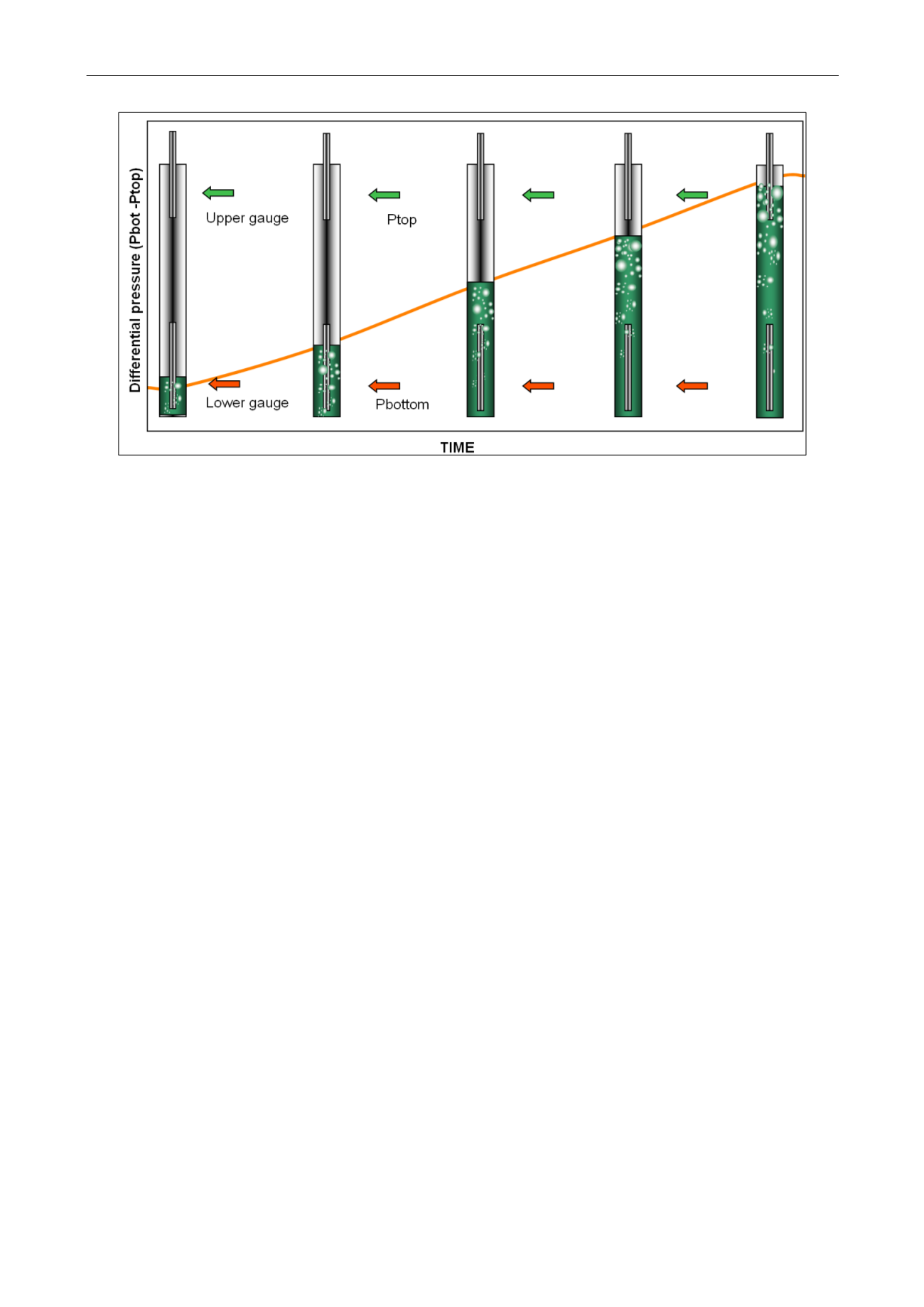

Dynamic Data Analysis – v5.12.01 - © KAPPA 1988-2017
Chapte
r 3 – P ressure Transient Analysis (PTA) -p113/743
Fig. 3.H.3 – Pressure difference
3.H.5
Pressure correction
Clearly it would be desirable to be able to correct for any perturbation in the pressure caused
by the ‘phase segregation’, which also in the majority of cases has an adverse effect on the
Bourdet derivative used for the diagnostics in pressure transient analysis.
In practice this has proved to be near on impossible although using models that takes into
account changing wellbore storage can sometimes reproduce the observed effects, but with
little added quantitative value. The important task is to identify the problem and discount the
period of perturbation when the data is being analysed by simply ignoring this part of the data
and being able to explain why the data was ignored.
The simple identification that a problem exists will also help the engineer in making static
pressure corrections. The fact that the pressure gauges sensing points are seldom at the level
of the sandface is often overlooked by the interpretation engineer.
Classically, the static pressure (pi, p*, p bar, final build-up pressure) is corrected:
From the gauge depth to the sandface using a static well static gradient.
From the sandface to a common reservoir datum using the reservoir gradient taking into
account any gradient changes.
This correction is usually done manually and is essential to establish reservoir pressure trends,
declines and depletion rates.
In the past the dynamic pressure was not corrected as this involved advanced modeling with
multiphase flow. Today many such flow models are available. The advanced correction of
dynamic pressure data is covered in the chapter on wellbore models.
















